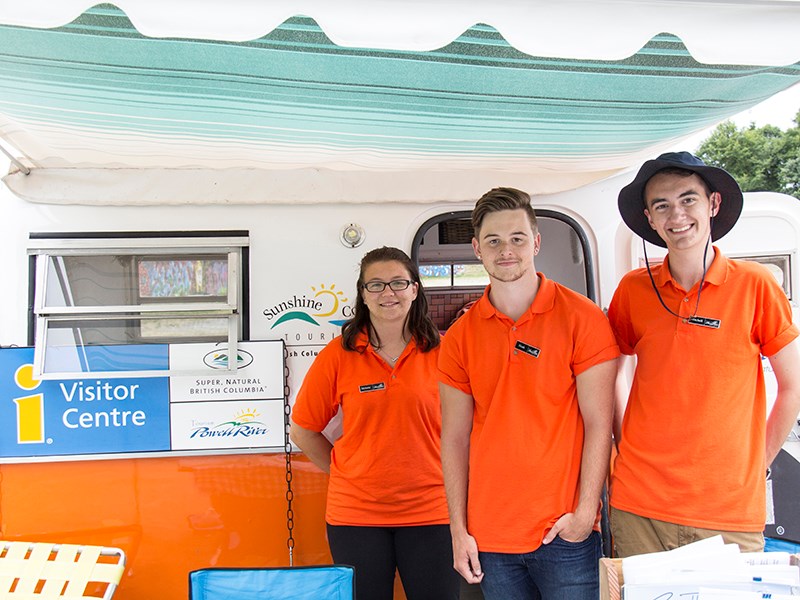Powell River might not have an exact dollar figure for what the increase in tourists means to its economy, but tourism continues to be a growth industry.
The area is already seeing more out-of-province vehicles stacked with bicycles, kayaks, canoes and paddle boards, as well as RVs and boats. These are the signs that Powell River’s spin into tourism season has started.
“If our hotels are busy and our restaurants are busy, and we’re seeing the traffic in town, you can bet that’s a good economic-impact indicator generated by tourism,” said City of Powell River manager of economic development Scott Randolph, who estimates that tourism in the area is worth millions.
In a 2015-2019 strategic business plan for Sunshine Coast Tourism Partnership (SCTP), working with tourism Tourism Powell River, statistics from 2014 and 2015 show the rise in visitors and revenue begin to increase in June and then spikes dramatically, reaching the highest point for visitors, room revenues and ferry traffic in mid-summer.
“It is hard to provide hard numbers on the actual economic impact, because the data isn’t available,” said Randolph.
That data would be based on the real gross domestic product of the Powell River region, he said, which is unavailable because there’s no regional, provincial or federal body that provides those stats.
With no balance sheet to show a monetary figure, the closest the city has to having an indicator for the value of tourism is contained in two reports. Both of them support the argument that tourism is a growth industry.
The first is an excerpt of the tourism-sector profile from an economic baseline report of May 2015 commissioned by the city that said “historically, tourism has contributed between three and six percent of the region’s economic base and significant as a source of private sector jobs and income."
It went on to say tourism is difficult to quantify because it is not considered an industry by statistical agencies. Instead, it comprises portions of several industries such as accommodation, food and beverage, retail, transportation and personal services that cater to visitors.
The second indicator is based on calculations that the city did using Sport BC’s tourism model.
“We were able to estimate that local festivals alone, such as Kathaumixw, PRISMA, BC Bike Race and the Blackberry Festival, generate approximately $2 million in revenues in the community on an annual basis,” said Randolph.
A third indicator of the growth in tourism in Powell River is the new investments that are being attracted.
Vancouver businessperson Shih-tao Lu is in the initial stages of developing a comprehensive plan for the land he has purchased in the Powell River area, including a destination hotel.
“My plan is to help make this city a renowned tourist destination, taking advantage of the natural beauty, eco tourism and cultural tourism,” said Lu. “Our desire is to continue to work with partners such as Vancouver Island University and the Tla’amin Nation to develop a common vision and enhance what is already here. I believe the combination of tourism, education and natural beauty can attract people from all over the world to this area.”
Tla’amin also recognizes growth opportunities for investment in tourism, according to Kelly Rankin, chief executive officer of Tla’amin Management Services Limited Partnership.
“I understand that aboriginal tourism is one of the fastest growing segments of tourism in the province,” said Rankin.
Tla’amin's preliminary plan is to bring aboriginal tourism to the Historic Lund Hotel property. According to Rankin, approval processes and public consultations must be done before any projects can proceed.



